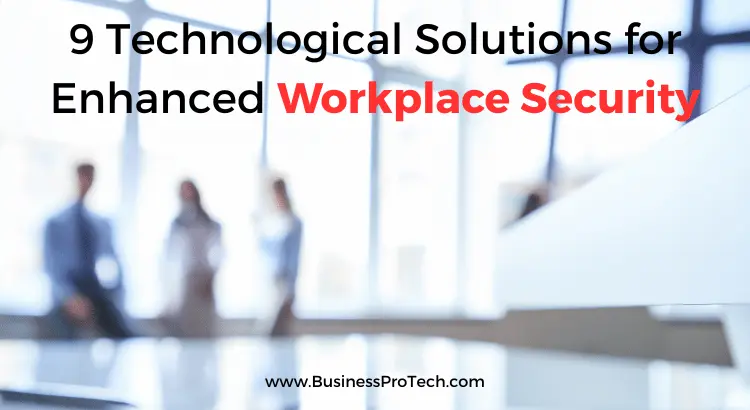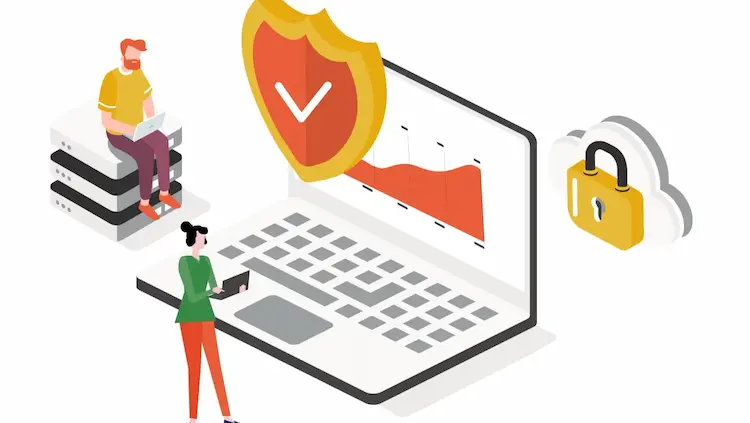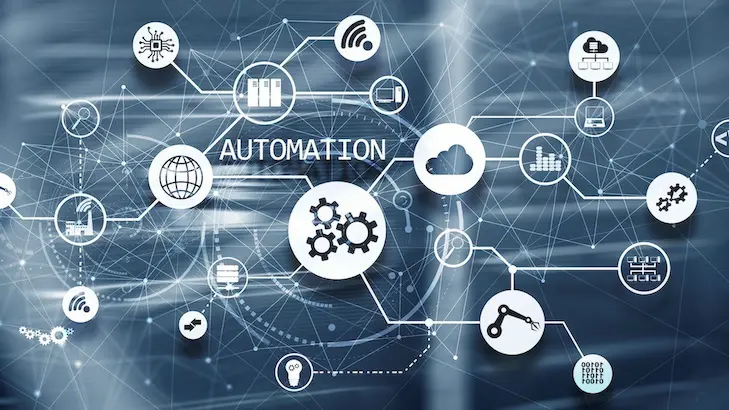In today’s rapidly evolving digital landscape, workplace security has become an indispensable priority for businesses. Technology plays a pivotal role in addressing the complex challenges associated with safeguarding employees, assets, and sensitive information.
This article explores the diverse range of technological solutions that businesses can leverage to enhance workplace security. From access control systems to video surveillance and cybersecurity measures, we will delve into innovative tools and best practices that empower organizations to create a safe and secure working environment.

Access Control Systems
Access control systems form the foundation of workplace security by regulating entry and exit points within an organization. Traditional lock-and-key mechanisms are being replaced by advanced solutions such as key cards, biometric scanners, and facial recognition systems.
These technologies not only offer enhanced security but also improve convenience and accountability. We will discuss how businesses can implement access control systems effectively and outline the key considerations when choosing the right solution.
Video Surveillance
Video surveillance has evolved significantly, transitioning from analog CCTV cameras to high-definition IP-based systems. Modern video surveillance solutions provide real-time monitoring, intelligent analytics, and remote access capabilities.
We will explore the benefits of video surveillance in deterring crime, investigating incidents, and monitoring employee behavior. Additionally, we will address privacy concerns and highlight the importance of establishing clear policies and procedures to strike a balance between security and privacy.
Cybersecurity Measures
As cyber threats continue to grow, organizations need to prioritize cybersecurity within their security plans at work. We’ll shed light on the importance of implementing strong security measures, such as firewalls, intrusion detection systems, and encryption methods.

Additionally, we’ll stress the value of continuous monitoring, assessing vulnerabilities, and performing regular updates to maintain a sturdy cybersecurity stance.
Mobile Security Solutions
As employees increasingly rely on mobile devices for work-related tasks, organizations must address the unique security challenges they present.
We will explore mobile security solutions that enable secure access to corporate resources, protect against malware and phishing attacks, and enforce data encryption on mobile devices. By implementing strong mobile security measures, businesses can mitigate risks associated with the use of personal devices and ensure the integrity of sensitive data.
Integration and Automation
To maximize the effectiveness of workplace security solutions, integration, and automation are key. We will discuss how organizations can integrate access control, video surveillance, and cybersecurity systems to create a comprehensive security ecosystem.
Additionally, we will explore automation through technologies such as AI-powered analytics and machine learning algorithms, which can enhance threat detection, streamline security operations, and provide actionable insights.

Facility Entry Screening
Implementing facility entry screening measures is crucial to enhance workplace security. This involves conducting screenings at access points to identify potential threats and prevent unauthorized individuals from entering the premises. Common screening methods include bag checks, metal detectors, and body scans. These measures can help detect concealed weapons, dangerous objects, or prohibited items.
Facility entry screening acts as a deterrent and provides an additional layer of protection against threats such as workplace violence or intrusions. By implementing robust screening protocols, organizations can create a safer environment for employees and visitors alike.
Panic Buttons and Emergency Communication Systems
Panic buttons and emergency communication systems are vital components of workplace security. These systems provide employees with a quick and discreet way to alert security personnel or law enforcement in case of an emergency or threatening situation.
Panic buttons can be installed at strategic locations throughout the workplace, such as reception areas, meeting rooms, and employee workstations. When activated, these buttons trigger immediate responses, such as sounding alarms, notifying security personnel, or initiating emergency lockdown procedures.
Additionally, integrating panic buttons with emergency communication systems, such as intercoms or mass notification systems, enables organizations to relay critical information and instructions to employees during emergencies, ensuring a coordinated and timely response.
Visitor Management Systems
Visitor management systems play a crucial role in controlling and tracking individuals who enter workplace premises. These systems enable organizations to register and identify visitors, issue visitor badges, and monitor their activities while on-site.

By implementing visitor management systems, businesses can enhance security by accurately recording visitor information, including check-in and check-out times, the purpose of the visit, and the individual they intend to meet. These systems can also integrate with access control systems, allowing organizations to grant or restrict access to different areas based on visitor profiles.
Visitor management systems not only enhance security but also improve the overall visitor experience by streamlining the check-in process, reducing waiting times, and maintaining a professional image.
Environmental Monitoring and Hazard Detection
Ensuring workplace safety goes beyond physical security measures. Environmental monitoring and hazard detection systems are essential for identifying and mitigating risks related to fire, gas leaks, chemical spills, or other environmental hazards. These systems utilize sensors, detectors, and alarms to monitor temperature, humidity, air quality, and the presence of hazardous substances.
In the event of abnormal readings or potential hazards, these systems can trigger alerts, initiate evacuation procedures, and notify emergency response teams. By proactively monitoring environmental conditions, organizations can prevent accidents, minimize property damage, and safeguard the well-being of employees.
Integrating environmental monitoring systems with central monitoring platforms or building management systems allows for real-time monitoring and centralized control, facilitating swift responses to critical situations.
Conclusion
In conclusion, by incorporating a comprehensive range of technological solutions, businesses can enhance workplace security and create a safe and secure working environment.
Access control systems, video surveillance, cybersecurity measures, mobile security solutions, facility entry screening, panic buttons, emergency communication systems, visitor management systems, and environmental monitoring and hazard detection all play vital roles in safeguarding employees, assets, and sensitive information.